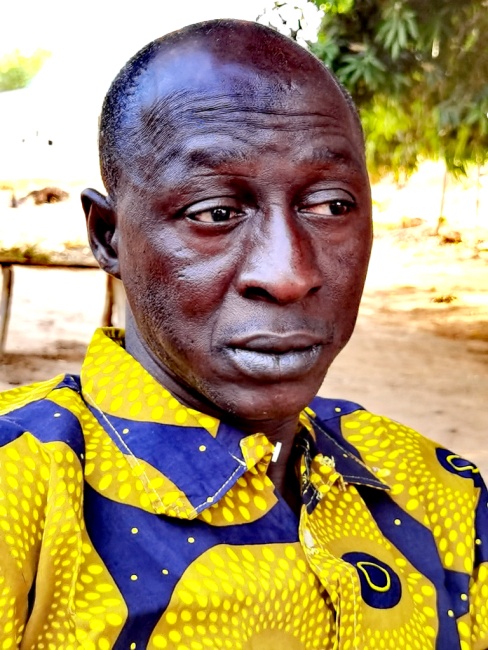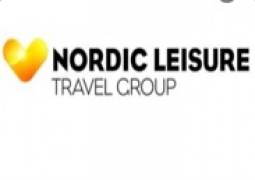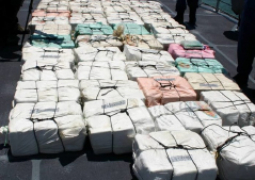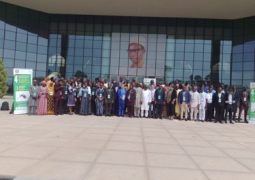
From his recount at his village in Badibu in The Gambia, this was indeed a miserable journey. Travelling from Banjul through the desert to Mali, Niger, Algeria, and Tripoli, Morocco; across the Mediterranean Sea into Europe. “I wish such an experience for no other Gambian, especially youth from my village,” he said, sounding regretful.
Mr Jammeh traveled over 17, 000 Kilometers risking his life in search of greener pasture in Europe. Sometimes, he traveled in twos, threes, or other times, in multitudes. Sometimes, they got separated, men and women apart. Pockets of shirts and trousers emptied and clothes torn off.
“Some of the travelers hid their savings in the soles of their shoes but that was quickly discovered. One of the thieves brutally hit my head with his rifle. I lost consciousness for several minutes until I could get up again, totally bewildered,” he recounted.
At his village in The Gambia, Kalilu had some boys over for work and green tea. They sat around while he narrated the experience of the journey. Their reactions were like they were watching a horror movie or live events unfolding right in front of their eyes.
“The young woman from Eritrea, who had swallowed her money, started crying and repeatedly screamed that she had no cash. Because she was not able to pay, she was savagely raped in front of us all,” he said of their kidnapping by bandits in the Sahara.
These bandits demand money for their freedom. You either emptied of your valuables or you became enslaved, sold or worse, even killed, according to Mr Jammeh.
“Once the gang member was satisfied from raping her, he took a knife and slashed her stomach. I had never seen such a brutal and horrific act. She died from bleeding as the criminals removed the coins and notes from her entrails,” he narrated.
His experience of the journey is now captured in a book translated in three international languages: “I wish to tell my story to raise awareness on the dangers, the sacrifices made to make it to Europe through irregular migration,” he said.
At his Village after Return
We traveled over 250 kilometers through the TransGambia Highway to meet Kalilu in Gerome, located in the Lower Badibou District of the North Bank Region of The Gambia. It is estimated 15 kilometers west from Farafenni towards Illiasa. You will not find a board on the highway to announce the village. You instead ask at Yalal Tankonkunda for directions.
Gerome is a 2.5-kilometer, six compound village south of the main highway. You really need a four wheel drive to drive across two Villages onto the bush and over the hill, down a narrow path that is used as a road.
Mr Jammeh, affectionately called “Ba Kalilu” is currently the Alkalo of the village. When he undertook the journey almost 15 years ago, his father was Alkalo.
Having left Banjul in 2002, Kalilu’s mission was to go to school and become a scholar in Europe. Unfortunately, things did not go as he anticipated. He just left Secondary Fourth at St. Joseph’s Ex-Pupils few years before the journey. With no means of pursuing his objective in The Gambia due to costs involved, he opted for a journey to Europe. He was already 35 years old by then.
Mr Jammeh first flew from Dakar through Algiers to Tripoli. Having spent a week of his two-week visa in Banjul struggling to pay for his ticket, he got deported to Algiers as soon as he landed in Tripoli. He would spend another two weeks in Algiers in order to get a flight back to The Gambia. It was already a failed mission.
He would not give up on his dream to get to Europe. He now opted for the most dangerous journey – the “backway” to Europe. After being convinced by traffickers in The Gambia that success was highly possible through the desert and high seas, he began preparing for another one.
“It was a promised journey of a week but it took months. I had my confidence revived by the information that I received from the traffickers. I got brainwashed into going and so I prepared to depart,” he narrated.
He departed Serre Kunda again in 2002, traveled to Basse, Vellingara town at the border with Senegal, through Tambacounda in Eastern Senegal, they proceeded to a border town of Kidera between Senegal and Mali.
The Desert, Algeria and Morocco
UN DESA data indicates that in 1995 there were 38,385 Gambian migrants globally, and that the number rose to 90,254 (135%) by 2015. Except for the mixed migration profile in the UK, migration to Europe in the past 10 years was characterised by persons seeking asylum and arriving irregularly.
In recent past, Italy was the destination for the highest number of irregular African migrants crossing the Mediterranean. At its highest in 2016, of the 181,436 people who arrived by sea in Italy, 11,929 (6.6%) were Gambians. This was a 41% increase from 2015 where the number Gambians arriving by sea was 8,454. Of these arrivals in 2016, 27% were unaccompanied and Separated Children (UASC), constituting a 150% increase from 2015.
From the top 10 nationalities arriving by sea in Italy in 2016, Gambia was fifth, behind Nigeria, Eritrea, Guinea and Cote D’Ivoire. In the same year, of the 7,490 sea arrivals to Spain, 863 (11.5%) were Gambians, the second largest nationality, behind Cote D’Ivoire and ahead of Guinea.
In Spain, 8% of the irregular migrants who arrived in 2016 were young Gambians, 92% of them aged 15 to 17, and the remaining aged 5 to 14 years.
Persistence in the face of Misery
Throughout this journey, Kalilu joined thousands, if not tens of thousands of Gambians driven away by hopelessness and lack of opportunities.
In Mali, Kalilu found his way to Gao, then Bamako through Bobojulaso in Burkina Faso, to Ouagadougou. Once they entered Niger, they headed towards Tripoli via Gadamez, then Tripoli to Algeria via Deb Debon (another border town between Libya and Algeria). He crossed the desert into Algeria and found a town called Warragla, notorious for the trafficking of travelers from different countries across deserts.
By this time, Kalilu began contemplating his fate again.
He would risk it all for this journey, aware that the dangers were becoming more apparent each day. Yet he was determined. He recalled: “It was a journey of thousands of kilometers. Sometimes I am alone and most times, we are in a group. We used trains, lorries, minibuses and sometimes, it is just walking for hours and days.”
At Warragla, traffickers act as middle men for all services that travelers require. They hold all your needs in their hands. Housing facilities are rented out to host travelers from different countries. Their primary job is purposely centered on facilitating travels from Algiers to Malaya, another border town between Morocco and Algeria.
Between these two points, they often get raided by the Police on patrols, and once caught, they go through detentions. Mostly deportation follows – the authorities will not ship you back to your home. Instead, you get deported into the middle of the desert called “a no man’s land”, where you are left to find your way out, with no money, telephone or vehicle to aid you.
“Once you are dumped there, you become vulnerable to traffickers again. They make a living off such situations and charge fees per person they would help. Having no money to pay for services of traffickers, I still managed to find my way to Mali, to begin a third attempt,” he recounted.
Kalilu struggled to emerge from the desert between Morocco and Algeria, yet remained even determined to give the journey a third shot. This time, from Mali. He stayed to find manual labour jobs that will put food in his stomach and keep himself on the go. He would be saving any extra coins or notes he may have left for the road ahead.
First attempt across the Mediterian
The Journey of Misery was all but exciting in the desert. From destitution to enslavement, he endured it all. So many times he regretted why he would undertake this journey. But going back would be a shame for him and his family. He would rather die than return back.
“Finally, the boat arrived and we are ready to depart. Just before we embarked, the traffickers conducted a final shake down. Everything on your person is taken from you before you board. It was there I lost contact numbers to my family in The Gambia,” he recalled.
The first voyage across the Mediterranean had two boats full to capacity. After going for Kilometers into the ocean, the first boat got into an accident. A fire outbreak caused explosion and the boat capsized. Luckily, Kalilu was onboard the second boat, riding just about fifty meters away from the incident.
“So many were burnt to death and others drowned after the fire. I watched so close by but could not help them as they struggled and cried out for help. Others were rescued and those that drowned became food for the fish and other sea animals,” he recalled.
This was a sight he could not forget. Kalilu finally arrived on the coast of Europe after a second attempt by boat – the first was postponed due to the incident. It was to him, the end of the misery. Little did he know that this part was just the beginning.
Read Other Articles In Headlines
Ex-councillor sheds light on D100K withdrawn from ward account
Nov 13, 2023, 11:40 AM




